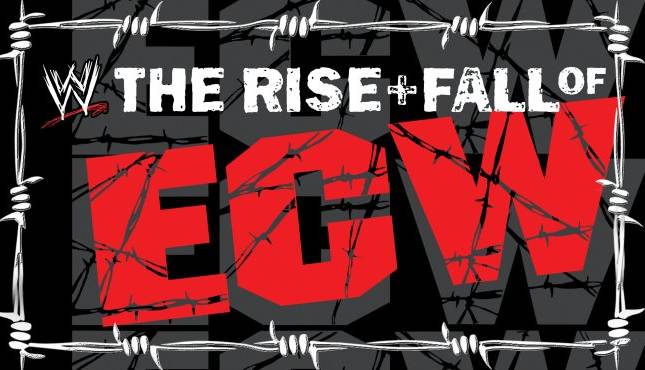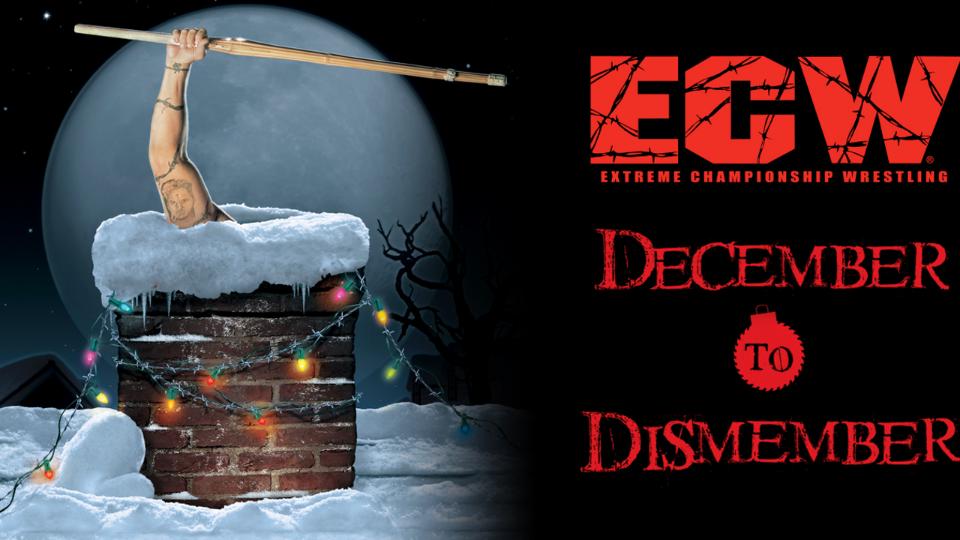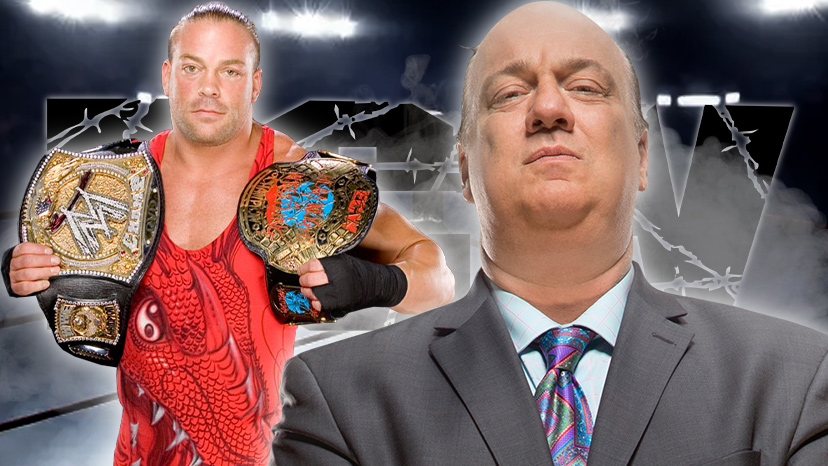The ECW revival in 2006 looked to bring a lost fan base back to the WWE, but failed spectacularly when Vince McMahon did not understand what made ECW beloved. This ECW comeback was a pale imitation of the iconic indie promotion, which Paul Heyman turned from a run-of-the-mill local company into the third-biggest company in the world.
After the success of The Rise and Fall of ECW and the two ECW reunion shows (plus the forgotten Hardcore Homecoming event), Rob Van Dam finally convinced WWE to bring back ECW as its own show. Sadly, they removed all the “extreme” elements of the show, didn’t give the wrestlers the freedom to become stars,and didn’t allow Paul Heyman to book the show how he wanted.
WWE also failed to differentiate the show from Raw or Smackdown, and by the end it was basically what NXT is to the main roster. Despite wrestlers like CM Punk and John Morrison coming from the brand, the ECW comeback was largely a failure, and was were glad when it was replaced by the NXT game show in 2010.
The Rise and Fall of ECW Inspired The Return of ECW

In 2005, the WWE released one of their best ever documentaries. This was called “The Rise and Fall of ECW”, and chartered the course of ECW’s beginnings as “Eastern Championship Wrestling”, and followed Paul Heyman’s journey to creating the third-biggest wrestling company in wrestlings most popular era.
The straight-to-DVD documentary featured footage from ECW (which WWE owned, since buying the remnants of the promotion in 2003) as well as interviews from all the stars of the promotion. The likes of Paul Heyman, Taz, Rob Van Dam and many more gave their insight into the promotion, detailing what went right in ECW’s meteoric rise, and also how it all came crashing down in 2001.
Thee DVD was a huge hit, and helped quench the thirst of fans desperate to have some more hardcore wrestling in their lives. Since ECW’s closure in 2001, there had been no major promotions catering to these fans, with the incredibly success of the video showing fans still wanted more ECW. Sales numbers are not available, but Dave Meltzer reported it was a top-seller for the WWE at the time.
With the WWE proving that ECW still had fans across the company, two different reunion shows were set up and promoted, just days apart. This showed two sides of WWE, and gave fans two of the best all-time shows wrestling has ever seen, back-to-back. These were ECW One Night Stand and Hardcore Homecoming.
ECW One Night Stand & Hardcore Homecoming

In June 2005, two events featuring former ECW talent ran just two days apart, paying tribute to the iconic history of the promotion. On one side, you had Shane Douglas, a former ECW Champion, and Jeremy Borash reuniting all the non-WWE former ECW wrestlers for one night only.
Stars like Too Cold Scorpio, Mikey Whipwreck, New Jack and Jerry Lynn came together on June 10, 2005, from the former ECW Arena in Philadelphia, Pennsylvania. The event was headlined by a three-way match between Sabu, Shane Douglas and Terry Funk, which drew great praise from the fans in Philadelphia.
The event was widely praised by fans, who saw it as the true successor to ECW. It featured action more catering to the hardcore fanbase, and not the faux-hardcore matches the WWE had been putting on. Having the main event be a No Ropes Barbed Wire match (with Mick Foley as the special guest referee) gave it a unique feel that you would never get in a WWE ring. The event was released to huge fanfare on DVD just two months later, which prompted three more reunion over the next six months.
However, it was the WWE’s revival of ECW that draw the most interest. With their marketing machine behind them, they managed to make most fans forget about Hardcore Homecoming, and instead focus on the WWE’s version of ECW. ECW One Night Stand (later altered to add “2005” to the end of its name). The event was thought up after the incredible success of The Rise and Fall of ECW, with the company booking it for the Hammerstein Ballroom in the Manhattan borough of New York City, New York.
With Tommy Dreamer in charge of coralling the wayward ECW stars back for one last match, he tasked Paul Heyman in helping him book the show. They show was exclusively filled with wrestlers who spent time in ECW, with a mix of ECW mainstays like The Sandman, Sabu and Rhyno and stars who spent little time there before moving on to WCW and WWE, like Chris Jericho, Eddie Guerrero and Rey Mysterio.
The ECW Revival Didn’t Understand What Made ECW Great

One year after the first ECW One-Night Stand, WWE decided on a second hardcore event, but this time with a purpose. It was not just a celebration of everything ECW, but a door to a revival of the company – but this time, under the control of Vince McMahon.
ECW returned in 2006 as a weekly TV show, with a mixture of ECW originals and many young stars. New ECW Champion Rob Van Dam, Sabu and Tommy Dreamer were joined by the likes of Johnny Nitro, CM Punk and Kevin Thorn, all vying to be the new face of Extreme on SyFy. The plan was for ECW to be a third brand for WWE, with young talent cutting their teeth on Tuesday nights, before becoming bigger stars on Raw or Smackdown in the future.
The news broke in April 2006, after years of badgering by Rob Van Dam to resurrect the promotion. He had won the Money in the Bank briefcase at WrestleMania 22, and was on his way to win both the WWE Championship and the ECW Championship from John Cena at ECW One Night Stand 2006. Getting ECW. He had been in Vince’s ear for years about a reboot of ECW, and was thrilled when he finally got his wish in 2005 and 2006.
“It was my idea actually to do the ECW pay-per-view.” Rob Van Dam said to Journey Of A Frontman. “And that process involved me going back and forth to Vince every day for a while with different ideas. “Look, you’ve got all these wrestlers on your payroll, but they used to be in ECW. Let us do a reunion show, it’d be awesome! You’ve got Eddie Guerrero, Rey Mysterio, Chris Benoit, Spike Dudley, I give him this big list. And he goes, “I didn’t realize that!” I said, “You don’t have to bring anybody in, just let us do what we wanna do one night, the way we wanna do it.” And he went for it, it happened obviously. ”
However, once the ECW TV show re-debuted on June 13th, 2006, to a huge amount of fanfare. WWE Champion Rob Van Dam was awarded the ECW Championship, while wrestlers like Tommy Dreamer, Sabu, The Sandman and The Zombie (yeah, me neither) were all featured on this episode. However, WWE stars like Edge and John Cena were also all over the show, which took away the extreme nature of the event.
The show originally saw praise from the fans, but it soon went downhill. While Paul Heyman was writing the scripts, he still had to have permission from Vince McMahon for every single thing you see on TV. This included pushing the ECW originals to one side (for the most part) in order to feature a mix of young stars (all terrible, aside from CM Punk) and WWE wrestlers like Big Show, Hardcore Holly and more stars who did not fit the ECW-aesthetic.
Rob Van Damn lost the ECW Championship to The Big Show not long after winning the belt, which knocked a lot of the wind out of ECW’s sails. He was by far the top star in ECW (aside from maybe Kurt Angle, who was released soon after joining the brand), and he was clearly the man to hold the belt through the promotion’s difficult early years.
Sadly, Rob Van Dam lost the WWE Championship and ECW Championship due to his arrest, alongside Sabu, for drug possession while driving. The pair were never charged nor convicted with any crime, but the optics of being pulled over by the police was not something the WWE wanted. This killed a lot of momentum the group had, and may have been the reason that Vince McMahon was hesitant to push the often-troublesome ECW original wrestlers for this comeback show.
However, it was the December to Dismember pay per view which killed ECW for good.
December To Dismember

The worst pay per view in WWE history was ECW’s only pay per view after their comeback. ECW December to Dismember is often cited as the death knell of ECW, proving to Vince McMahon once and for all that ECW was not a viable part of the WWE business plan.
It wasn’t as if it was really the concept of ECW’s fault. McMahon failed to promote the show at all, only booking two matches by the time the event started airing. The only matches announced were the main event title match, and a tag team ladder match between MNM and The Hardy Boyz – neither of which wrestled for ECW.
The rest of the show was populated by last-minute matches that would not look out of place on a random episode of Smackdown. It was the opposite of must-view TV, and the matches that did happen were not even very good.
While the show was absolutely terrible all round and “set up to fail”, according to Joey Styles, it was the treatment of CM Punk at December to Dismember that forced Paul Heyman to quit the promotion, signalling the end for the real ECW.
Big Show defended his title inside the elimination chamber at the show, against six of ECW’s top stars (plus Hardcore Holly, who replaced Sabu at the last minute). Heyman (and many of the fans) was certain the CM Punk should be the man to walk out of the show as the new ECW Champion, given how popular he had become with the fans – which was exemplified the week prior at Survivor Series.
“The pay-per-view was scheduled right after Survivor Series in Philadelphia, where the audience reacted to CM Punk as such a huge Superstar that Triple H and Shawn Michaels let him do the “Are you ready?” portion of the D-Generation X routine.” Heyman said on WWE.com.
“There was no doubt in my mind that CM Punk was ready to explode and carry ECW. But because the headbutting had gotten so out of control between me and Mr. McMahon, I couldn’t get him on board.”
“The struggle over the course of the brand had turned personal between us. One of us had to go. I dare suggest that [Mr. McMahon] needed to stay, which left the other person in the equation, Paul Heyman, on a course back home for a much needed break.”
Instead of CM Punk walking out of the company as the ECW Champion, Bobby Lashley won the match and his first World Championship. This turned fans off the promotion completely, and the slap-dash nature of the pay per view rewarded the WWE with their lowest pay per view buy rating of all time. If the horrible show didn’t convince Vince McMahon to stop caring about the show, that surely did.
While the promotion was effectively over as a serious alternative at his point, Chris Benoit’s death was the final nail in the coffin, and it was never treated like anything more than the third-best brand and Smackdown-lite from that moment on.
Learn more about Chris Benoit’s death.
ECW as a third brand continue for a few more years, but it was no longer the extreme promotion fans had hoped for. Despite bringing stars like Kane, Mark Henry and Christian in to become their champion, ECW was used to build young talent for the future, with a view of moving them to Raw or Smackdown. This was fairly successful, with future WWE Champions like Sheamus and Kofi Kingston coming from ECW, so the ECW comeback was not a total failure.
It was a massive failure, don’t get me wrong. But you have to look at some of the positives.

